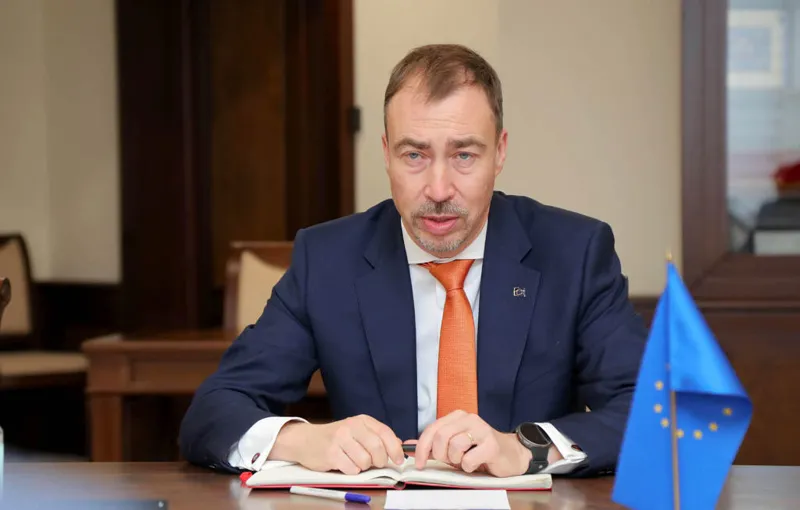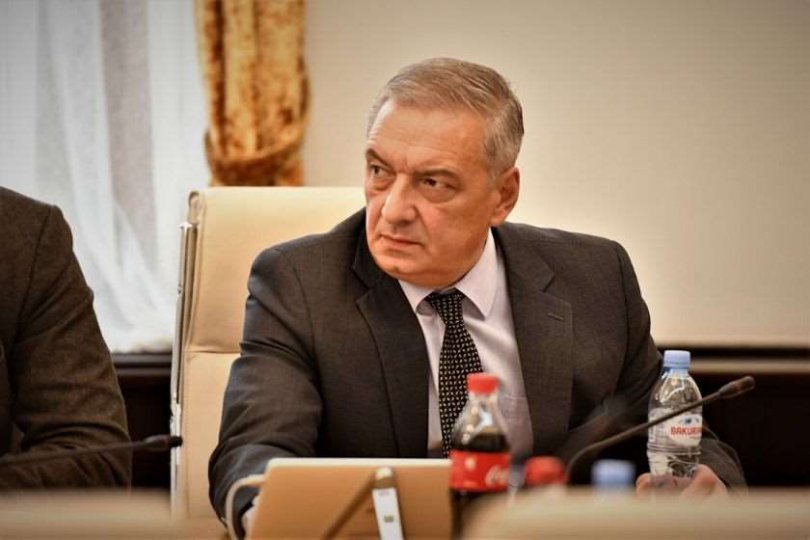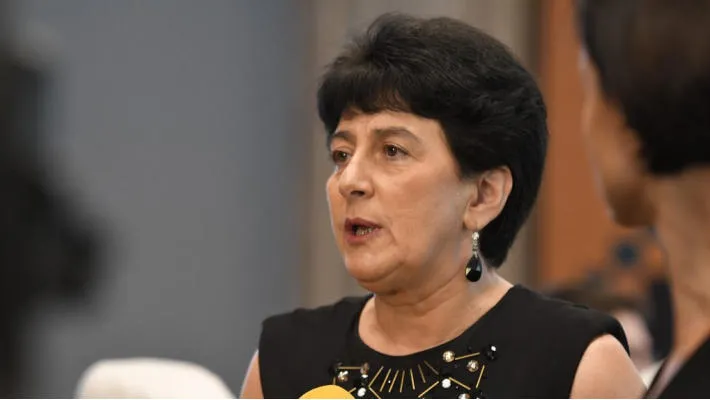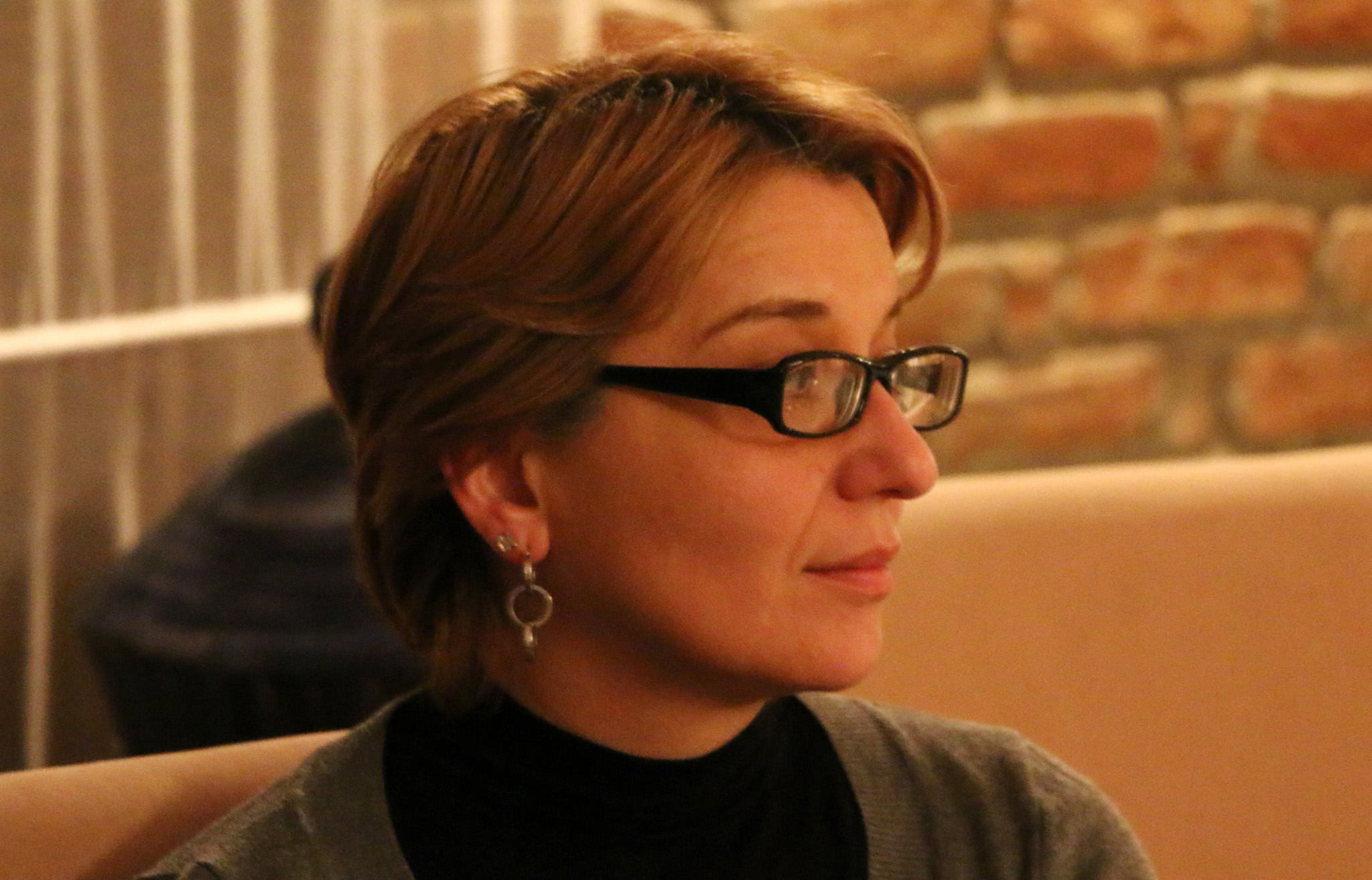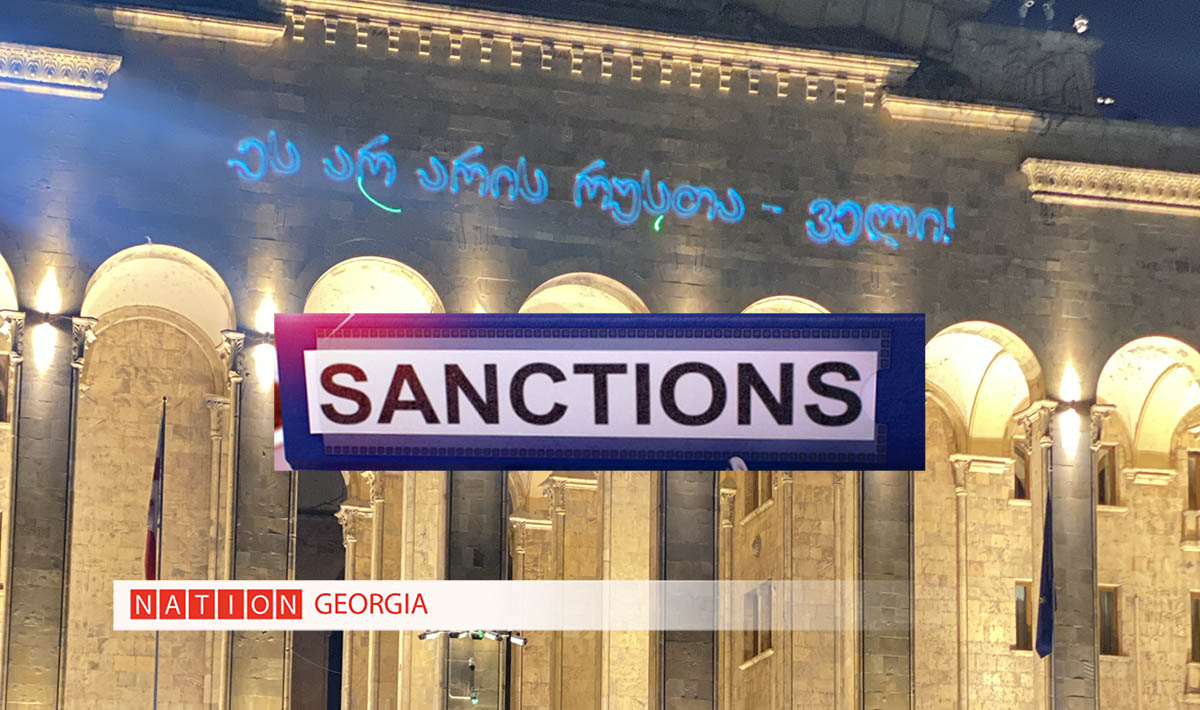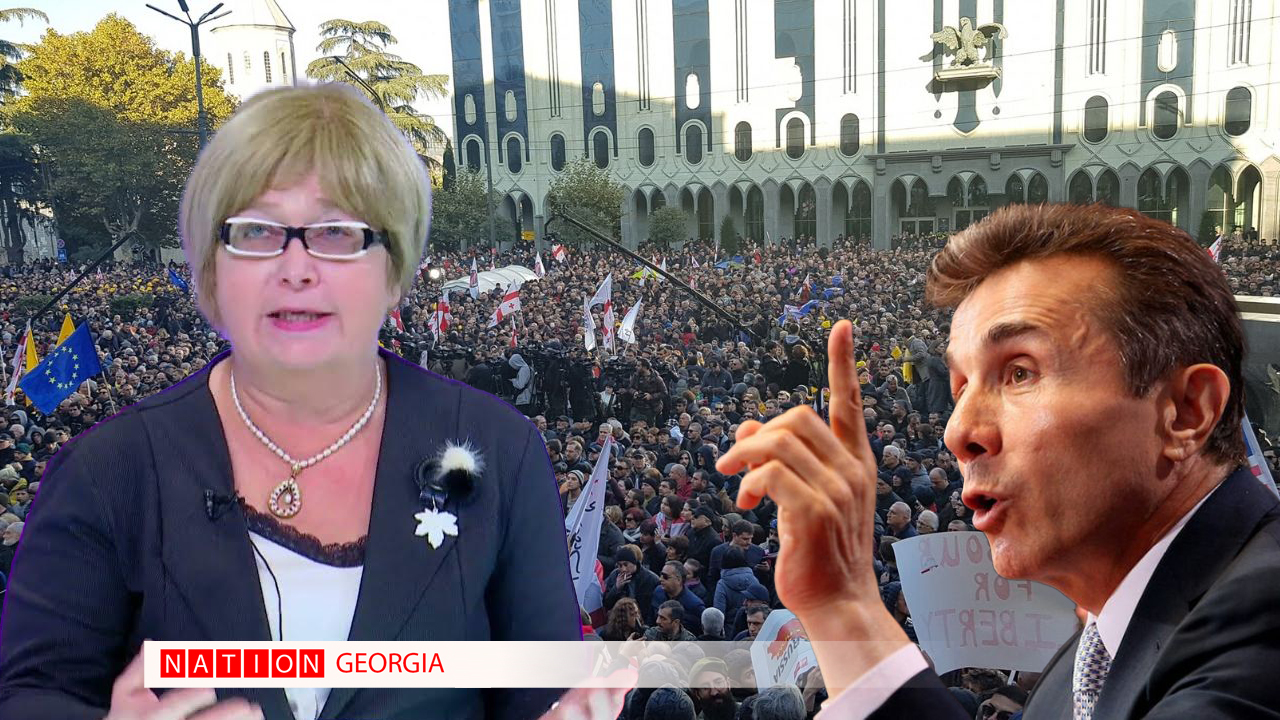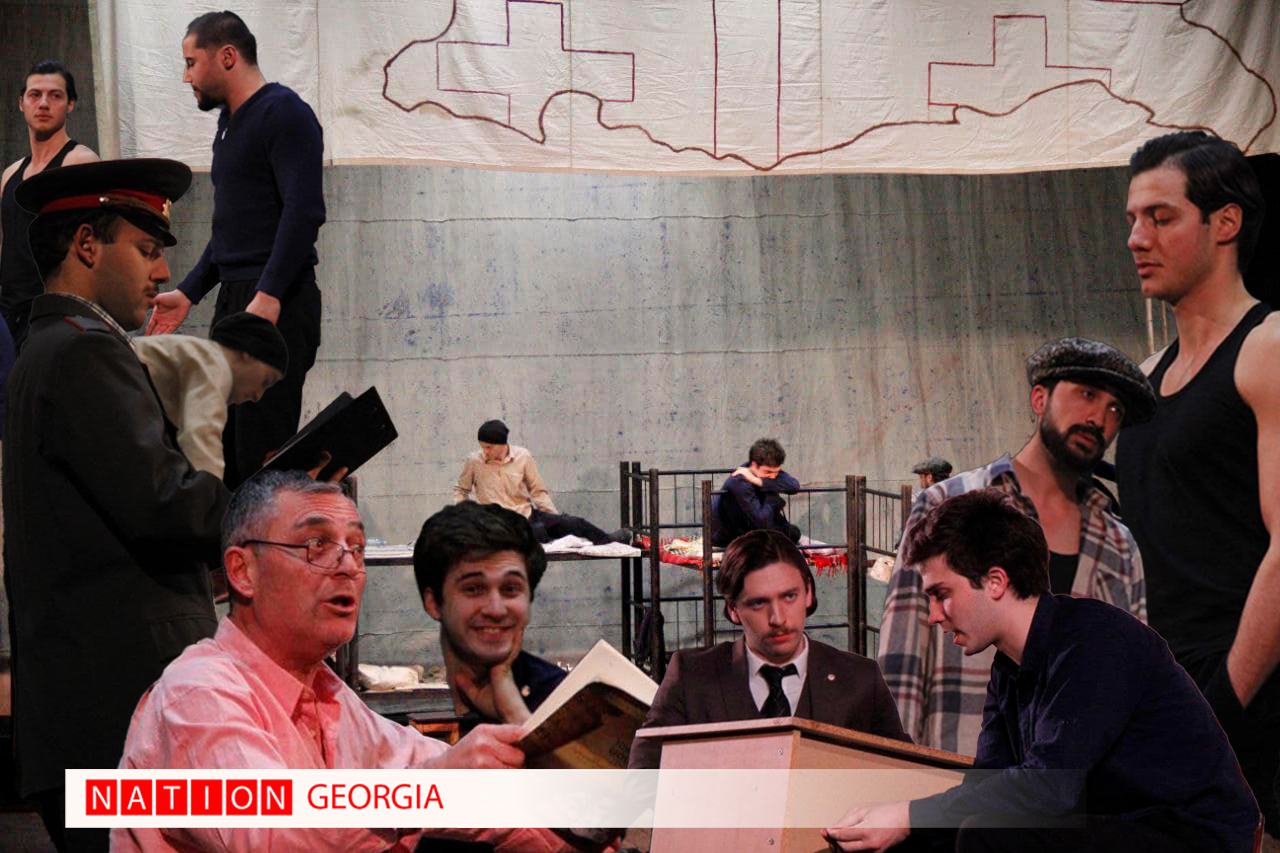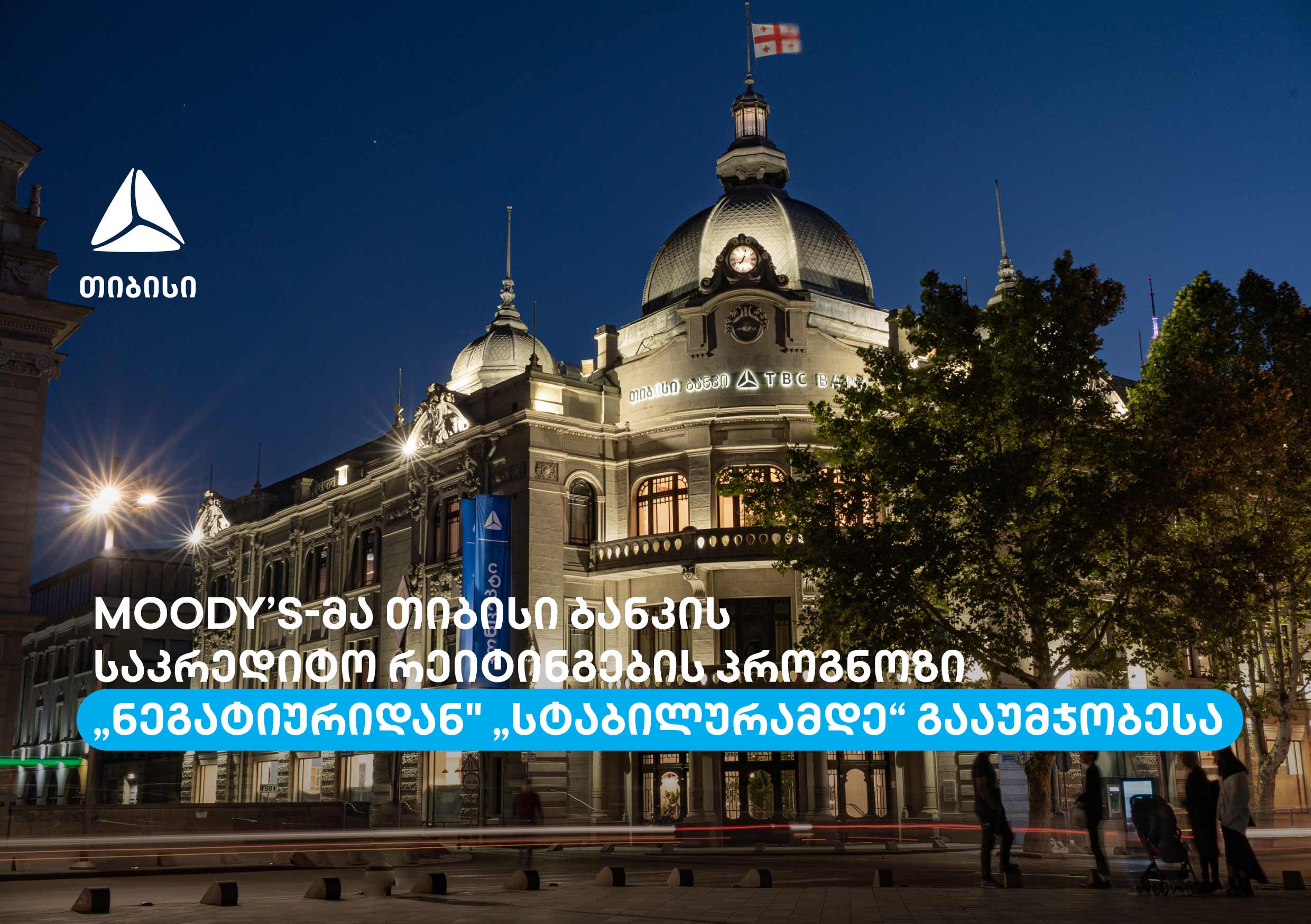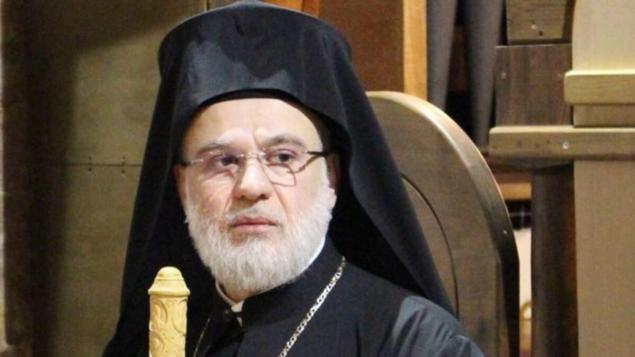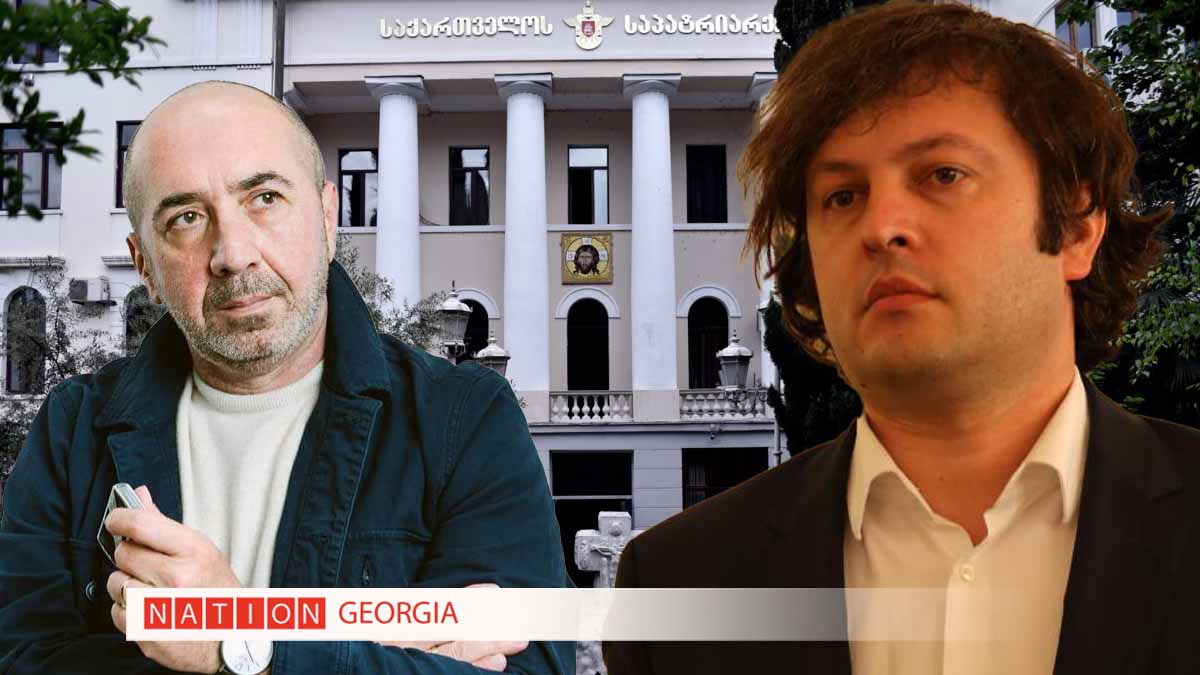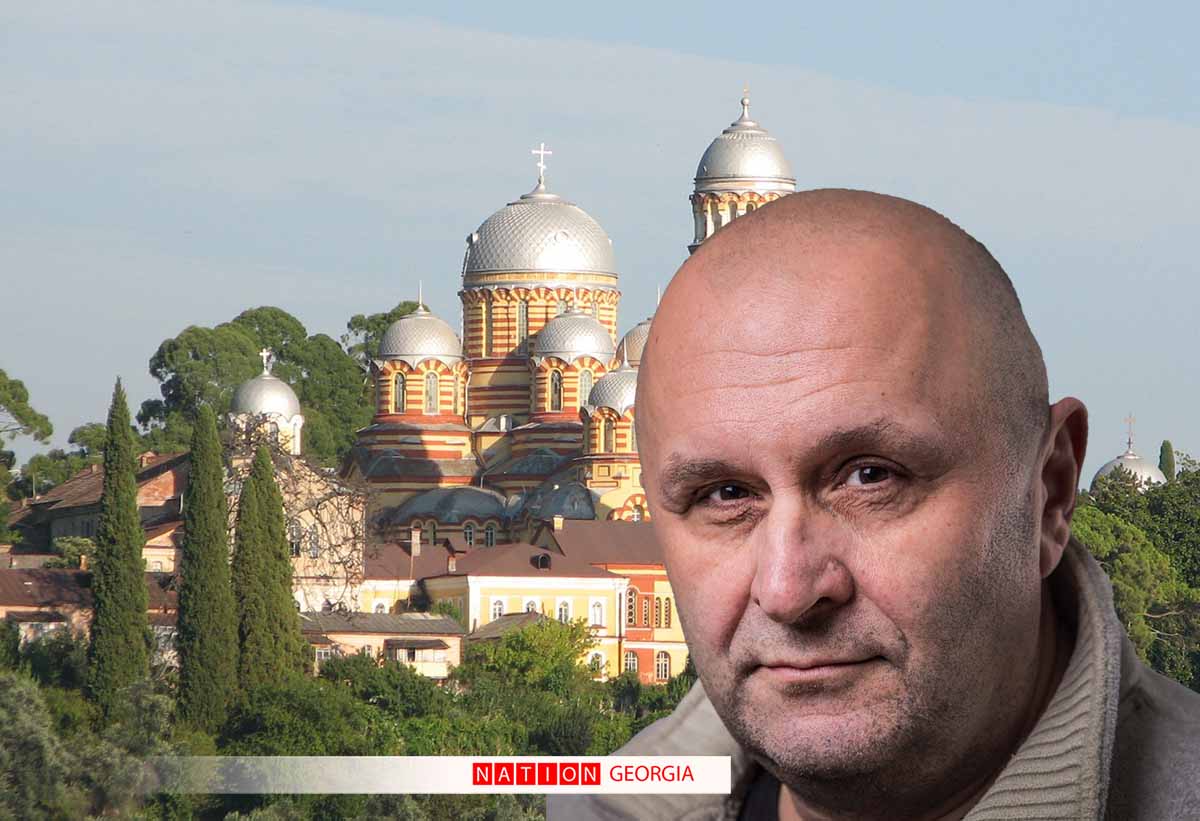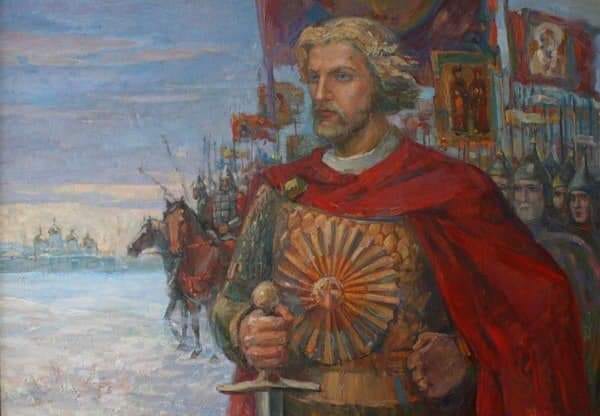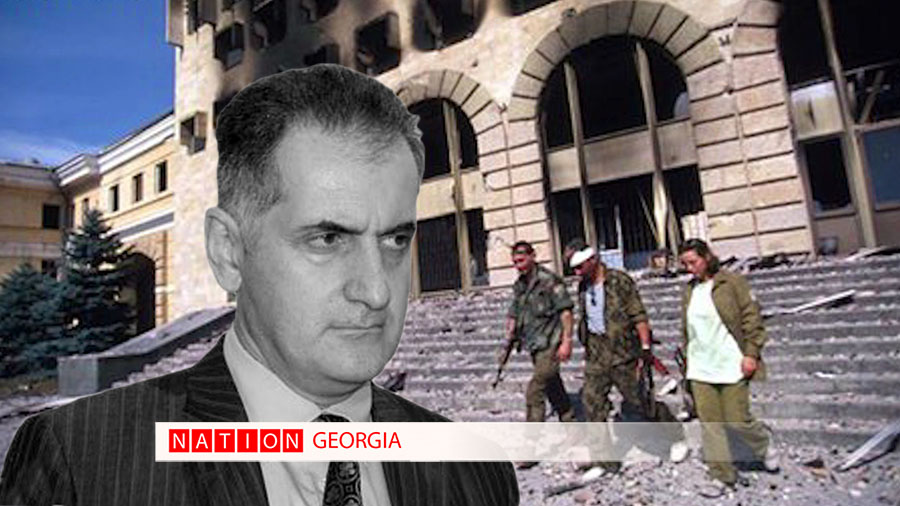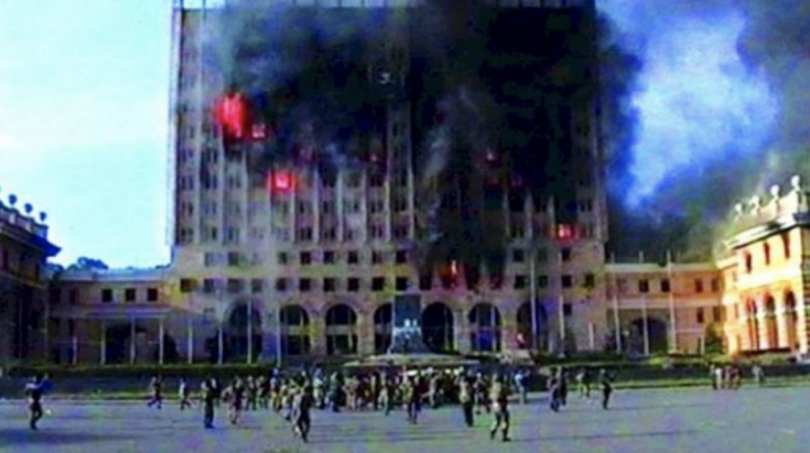
Greek Hierarchs at the Akhtala See
10.26.2023 | 10:12 ნახვები: 1435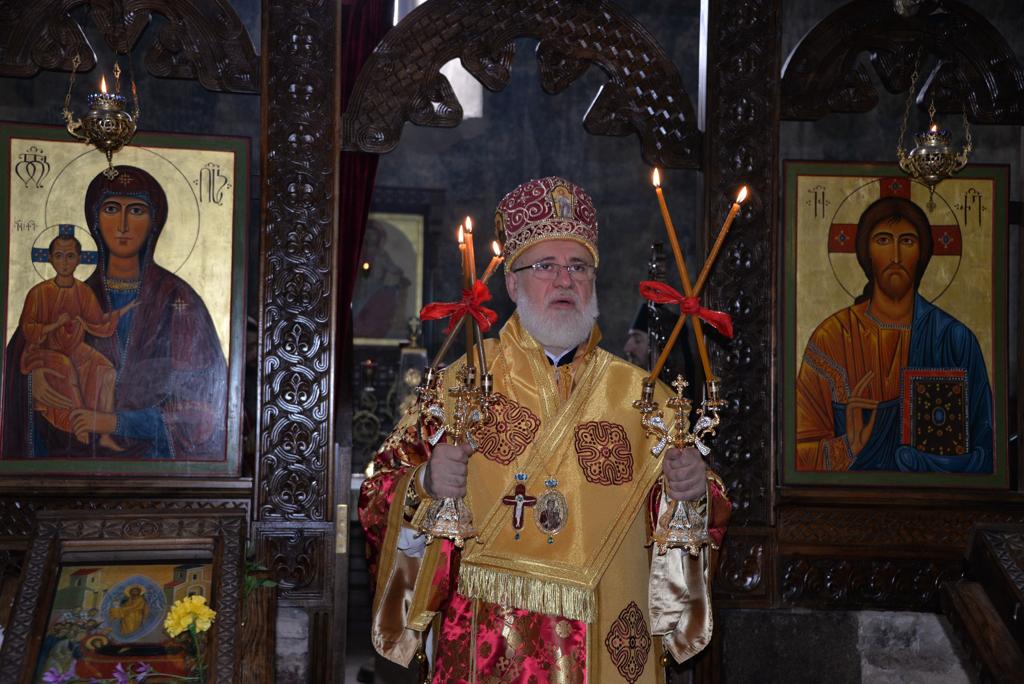
(St. Sophronius of Trebizond and Joachim of Cyprus)
The See of which I, a humble servant of God, Archbishop the Diocese of Dmanisi and Agarak-Tashiri unites two episcopal Sees and historically covered large administrative districts in Dmaniskhevi and the province of Lore-Tashiri. In the age of antiquity this region was called Gugareti. The name of this region is mentioned both in Georgian and Armenian, as well as in classical Graeco-Roman historical sources. The Dmanisi episcopal See, located within the political borders of Georgia, was founded in VI century. The episcopal See of Agaraki was established in V century. In the second half of XIII century the Akhtala Cathedral first emerged under the name “Metropolitan of Didi Somkhiti”, and then as the Akhtala Metropolitan. Since 1921, the Akhtala See as an ecclesiastical unit, part of the Lore-Tashiri province, has been located within the political borders of Armenia.
My report will focus just on the Akhtala Metropolitan which is one of the historical and respected Sees of the Mtskheta Patriarchate. From 70s of XVIII century to the end of 20s of XIX century, this See was held by the bishops of the Mtskheta Patriarchate and the Patriarchate of Constantinople, raised in the spiritual bosom of the great Church of Constantinople - St. Sophronius of Trebizond and Chaldia, and Joachim of Cyprus from the eminent Church of Cyprus, who labored in the Kykkos Monastery, which had great spiritual traditions.
It is worth mentioning that last year it was marked 245th Anniversary of the consecration of St. Sophronius to the Akhtala Episcopal Cathedral, and 200th Anniversary of the ordination of to the same See. It is also noteworthy that both Bishops worked in the jurisdiction of the Mtskheta Patriarchate during that period in the history of Georgian, Constantinople and Cyprus churches when all three local churches were going through a difficult period full of ordeals.
Georgian historical literature contains certain information on the life and work of St. Sophronius of Akhtala and Joachim of Akhtala. In addition, many researchers or travelers gave us important information on the work of these Greek clergymen at the Akhtala See and the settlement of the Greek community in the village of Akhtala during the indicated period. The Great Church of Constantinople has preserved the synaxarical edition of the life and work of St. Sophronius of Akhtala, which is an important source of information about the biography of St. Sophronius and his activities at this historical see of the Mtskheta Patriarchate. The written sources available to me are attached to this report in the footnote. I believe that appropriate scientific research in the future will make it possible to obtain additional information.
Despite the centuries-old and special relations of these local churches, the activity of Greek Bishops in the jurisdiction of the Mtskheta Patriarchate and the fact of their consecration in the Georgian Church in XVIII-XIX centuries is an event of great significance in the history of the relations between these Orthodox local churches. The historical period of XVIII century and the first twenty years of XIX century is a particularly dramatic episode for the Georgian Kingdom and the Georgian Church, when the country was in an extremely weakened and oppressed state. Its political life was entirely reduced to repelling various invaders. As a result of constant wars and fighting, the existence of the state faced a real threat. The nation was on the verge of extinction. Georgia had to repulse the aggressive destructive invasions of two formidable empires of that period - Iranian and Ottoman. At the same time, the country became an arena for their confrontation. The third, the Russian Empire, was waiting for an opportune moment to seize it. In addition, the country was being destroyed as a result of intra-feudal conflict and constant incursions from Dagestan. It should be noted that in XVIII century these raids were sometimes encouraged by the Ottoman Empire. Dagestani attacks became especially frequent after the conclusion of the Treaty of Georgievsk between Russia and Eastern Georgia in 1783. Historian Sargis Kakabadze rightly notes that this treaty determined the decline of the Kingdom of Kartli-Kakheti. This is confirmed by the reaction of the Islamic Khanates of the Caucasus, which were in vassal relations with the kingdom of Erekle II and were dissatisfied with the fact of reconciliation between Russia and Georgia. These Khanates associated Russian penetration into the Caucasus with danger to themselves and distrusted King Erekle II. But the main downfall of the treaty for Georgia was that the Kingdom of Kartli-Kakheti did not get any of the benefits from Russia that King Erakle II was waiting in vain. By 70-80s of XVIII century, the population of Eastern Georgia (Kingdom of Kartli-Kakheti) consisted of almost 44,890 families. Of these, the ethnic Georgian population numbered almost 19,520 families. The Mtskheta Church was passing the usual path of martyrdom.
In the second half of XVIII century and the first decade of XIX century, as a result of the activities of the Georgian monarchs and the Church to achieve general national consolidation and mobilization, there was no room for discrimination based on ethnicity in the Kingdom and Church of Georgia. It is noteworthy that historically the Georgian Apostolic Autocephalous Orthodox Church, from its establishment, consisted of a multi-ethnic population of the Chalcedonian faith. The host of his first saints includes precisely ethnic non-Georgians, whom Christ acclaimed in the Georgian Church. A clear confirmation of this is the centuries-old history of the Mtskheta Tomb, in the bosom of which hundreds of representatives of the Georgian people, including many non-ethnic Georgians, distinguished themselves by their spiritual merits, and some of the latter were even awarded not only the priesthood, but also the hierarchical rank. The good example of this are the names of the bishops of Akhtala - St. Sophronius and Joachim. I would also like to mention here Ignatius the Greek, a martyr priest from West Georgia, who was their contemporary and died as martyr by order of the Akhaltsikhe Pasha.
On October 29, 1777, the Catholicos-Patriarch of All Georgia, His Holiness and Beatitude Anton the I consecrated Sophronius the Greek as a bishop in the Svetitskhoveli Cathedral and, by decree of the King of Eastern Georgia (Kartli-Kakheti Kingdom), Erekle the II appointed him the first bishop of the renewed eparchy of the Akhtala See. In 1776, by decision of King Erekle the II, Sophronius was invited from the Trebizond region of Chaldea. According to Georgian historical sources, this happened after the king of Kartli-Kakheti resettled more than 500-800 families of the Greek and Greek-speaking population from the provinces of Trebizond and Gümüşhane to the vicinity of Akhtala Cathedral with the aim to develop ore deposits and restore the mining industry, which was considered extremely important for socio-economic security and development of the state. Deposits in Akhtala Cathedral are rich in copper, lead, tin, cast iron, gold and silver. The monarch’s goal was to use the resettled families of metallurgists to extract ore from the mines of the Debeda Gorge, which had been deserted due to constant invasions, in order to thereby partially ensure the economic and social well-being of the country and at the same time populate the province with a community of related, Chalcedonian faith. It should be noted that the settlement of Akhtala by the Chalcedonian Greek population took place in 1762, simultaneously with the unification of the two kingdoms that existed within the borders of Eastern Georgia (Kartli and Kakheti). The settlement of families of metallurgists from the provinces of Trebizond and Gümüşhane in Akhtala is also confirmed by the Greek synaxarion of St. Sophronius of Akhtala.
In general, settlement of the Greek and Greek-speaking population in XVIII-XIX centuries from Anatolia, the historical provinces of Pontus-Trebizond and Gümüşhane to Dmanisi and the province of Lore-Debeda, which was initiated, as noted above, by the King of Eastern Georgia, Erekle the II, occurred due to various circumstances. As a result of this, both in the Debeda Gorge and later in some abandoned Georgian villages of Dmanisi, compact settlements of Pontic Greeks were formed next to small settlements of ethnic Georgians. After the collapse of the Soviet Union, the absolute majority of the Greeks living in Dmanisi moved to Greece, and now only a small number of ethnic Greeks live in the Dmanisi municipality. It should be emphasized that, along with the Georgians, the local Greek population made an important contribution to the preservation and maintenance of Georgian churches existing near their settlements, the preservation of Orthodox worship, as well as the retention and development of local agricultural traditions.
From the synaxarion of St. Sophronius we learn that Sophronius of Akhtala was born in 1738 in the village of Lotsion of Chaldia in Pontus, in the family of a clergyman George Surtaridis. His civil name was Simeon. He became familiar with monastic life from his youth in the famous historical abodes of the Trebizond. After completing monastic obedience at the Choutoura Monastery of St. George and the Soumela Monastery of the Most Holy Theotokos, Simeon Surtaridis fulfilled his obedience with the ascetic Meletios at the Vazelon Monastery of John the Baptist. Here he took monastic vows under the name Sophronius and was consecrated first as a deacon and then as a priest. From his synaxarion we find out that the clergyman Sophronius worked for seven years in the Vazelon Monastery and was distinguished by special virtues and merit. In 1776, Sophronius Surtaridis, at the age of 38, was sent by the abbot of the Vazelon Monastery Ignatius to Iveria (Georgia) to the Greek settlement of the Akhtala metallurgical mines, where numerous Greek families resettled from Chaldia by the invitation of the King of Iveria. As already noted, the resettlement of the Greek ore-mining community from Anatolia to the village of Akhtala occurred during the most difficult period in the political life of the Georgian state. Eastern Georgia at this time, in addition to oppression from the Ottoman Turkey and Iran, was constantly subject to raids from Dagestan, which was associated with additional casualties among the country's population.
Eight years after the consecration of Sophronius Surtaridis to the Akhtala Episcopal See, in September 1785, the ruler of Avaria, Omar-Khan, at the instigation of the Ottoman Porte, invaded Eastern Georgia with his 20,000-strong army. The defenders of the Akhtala fortress, led by nobleman Sesia Baratashvili, put up staunch resistance to the Avars. Despite this, Omar Khan was able to take the fortress of Akhtala, where the inhabitants of Akhtala and its surroundings had also taken refuge. The victim of the raid was nobleman Sesia Baratashvili himself. Anatolian miners settled in Akhtala and Alaverdi, and the entire Greek community, as well as local Georgians and Armenians living in the vicinity of Akhtala, many of whom were brutally massacred by the Dagestanis. Bishop, Sophronius of Akhtala tried to save part of the inhabitants and monks of the monastery, having hidden them in the hiding-place of the Akhtala Monastery and Cathedral, but the Avars and Lezgins filled the Akhtala Cathedral of the Assumption of the Most Holy Theotokos with the blood of the hidden people. They captured hundreds of Greeks, Georgians and Armenians, including Sophronius of Akhtala himself, numerous members of the monastic brethren and representatives of the house of the owner of Lore-Akhtala, nobleman Melikishvili. The Lezgins and Avars sold part of the humiliated and tortured prisoners in various cities of the Caucasus. They humiliated and tortured even the Bishop, Sophronius. He was redeemed from captivity by an Armenian Lady of the Catholic faith, who also ensured his journey by ship to Trebizond.
The army of Omar Khan completely plundered and destroyed the ore mines of Akhtala and Alaverdi, restored with great efforts by King Erekle the II. The state's annual income from the extraction of these ores was equal to one tenth and was mainly spent on the mercenary army. Dagestanis pillaged churches and monasteries located in Akhtala and the Debeda Gorge, seized a large amount of silver, gold, copper, money, and various items made on the spot. Loaded with loot, they approached the Lore fortress. When the Russian Tsar was informed about Omar Khan’s campaign against Eastern Georgia, he not only did not extend a helping hand to Georgia but did not even pay any attention to the request of King Erekle the II to send auxiliary troops. Later, on November 23, 1799, King George the XII of Eastern Georgia attempted to “restore the strength” depleted after the devastating wars through a treaty signed with Russian Emperor Paul the I. The treaty obliged Tsarist Russia to free the Kingdom from the “price” for being under Russian “protection” for twelve years and “entrusted” Russia with the development of the ore-rich deposits of Akhtala.
In 1796, the Trebizond Orthodox community chose the former Bishop of Akhtala, St. Sophronius, to replace the deceased Metropolitan of Trebizond Dorotheos. But despite of this, St. Sophronius was not enthroned in the Trebizond See. Instead, Parthenius of Tripoli was consecrated as Metropolitan of Trebizond. Obedient to God's will, St. Sophronius returned to the Vazelon monastery. The synaxarion of the bishop tells us about his activities in this monastery. It is noted that he was distinguished by a spiritual life similar to the early fathers and had the ability of prophecy bestowed upon him by the Holy Spirit. St. Sophronius built a chapel and cell in the eastern part of the monastery, which were preserved until 1904 as the “bishop’s cell”. He erected an iconostasis with the following inscription on one side: “Built in advance for his resting place by the poor Bishop of Akhtala, Sophronius”.
St. Sophronius acquired great love and authority in the monastic brethren, because of which the Abbott of the monastery Jeremiah was negatively disposed towards him. Constant oppression and troubles on his part later became the reason for his departure from the monastery. He returned to his motherland, the Chaldia village of Lotsion and spent the last years of his life there. St. Sophronius passed away in 1803, at the age of 65. He was buried in the parish church he had restored in Lotsion, where his body rested until 1824. From the synaxarion we learn that after he forced the St. Sophronius to leave the monastery, the Abbott of the monastery fell ill with a fatal disease, got paralyzed and died in 1805. We also find out from the synaxarion, that after the death of St. Sophronius numerous miracles were performed from his holy relics, on the basis of which, through appropriate procedures, he was canonized. The Holy Synod of the Patriarchate of Constantinople, on the proposal by the Metropolitan Sylvester of Chaldia, canonized Bishop Sophronius of Akhtala, presumably in 1825-26. According to the church calendar of the Patriarchate of Constantinople, the day of his remembrance was declared September 7 (20), the eve of the Nativity of the Most Holy Theotokos. Metropolitan Sylvester of Chaldia handed over to the Vazelon monastery, at the request of the brethren, the holy relics of St. Sophronius – the head and right hand. The remaining parts of the body were kept by the saint’s relative, the priest Lazarus. In 1880, the holy relics of St. Sophronius were placed in a silver reliquary, that had been made by Abbott Eliseus of the Vazelon monastery. The holy relics were kept in the monastery up to 1922. After St. Sophronius of Akhtala, his widowed See was taken by Varlam Eristavi, a representative of the noble family of the dukes of Ksani, who occupied the Cathedral until 1794.
In the 16th year after Omar Khan ravaged the village of Akhtala, Tsarist Russia illegally abolished the monarchy in Eastern Georgia (Kartli-Kakheti) and annexed Eastern Georgia. A year after this tragic event, by decree of the emperor, Joachim of Cyprus was consecrated as Bishop of Akhtala. Archimandrite Joachim, Protosyngelos, arrived in Georgia from the Kykkos Monastery of Cyprus in the early 80s of XVIII century to collect donations for the monastery. First, he visited Western Georgia, where he was received by King Solomon the I of Imereti. The King awarded him with a royal decree, according to which he donated to the Kykkos Monastery the renovated Monastery of the Theotokos in Vardzia, located in Kharagauli, with an estate and forests. In honour of the Kykkos Monastery of Cyprus, the Vardzia Monastery was called the Kykkos Monastery of Vardzia. From 1783 to 1914, Greek monks were sent there every seven years and collected donations. King Solomon the I appointed Protosyngelos Joachim as hegumen of the Vardzia Monastery. According to the royal decree, the donations collected were intended to help the Kykkos Monastery. After the death of Solomon the I, the royal decree was renewed by the King of Imereti (Western Georgia) Solomon the II. Joachim of Cyprus also received donations from the King of Eastern Georgia, Erekle the II. When the Greek residents saved from the invasion of Omar Khan returned to Akhtala (presumably, a small number of Greek residents got back to the village), at their request, on October 13, 1802, Catholicos-Patriarch of Georgia Anton the II (1762-1827) consecrated Joachim of Cyprus by Imperial Synodal decree as bishop to the historical Akhtala See in the Tbilisi Sioni Cathedral. It was established that Bishop Joachim would receive an annual salary of 2,000 rubles from the income of the metallurgical plant in the village of Akhtala. Until 20s of XIX century, along with the rank of Bishop of Akhtala, Joachim of Cyprus also held the position of Abbott of the Vardzia Monastery in the Georgian Orthodox Church. He sent the income received from the Akhtala See and the Vardzia Monastery to Cyprus, to the Kykkos Monastery. The work of Joachim of Akhtala “Theatron, politics” has been preserved. The Kykkos Monastery houses the liturgical vestments of Joachim of Akhtala with a Georgian inscriptions. During the period of his bishopric (in the time of Tsarist Russia), the Greek-speaking churches of the Caucasus were subordinated to the administration of the Akhtala See. Bishop Joachim of Akhtala died in 1827. He is buried in the Georgian Akhtala See-Monastery (by this time the autocephaly of the Mtskheta Patriarchate had been abolished by Tsarist Russia already for 16 years).
After his death, by decree of the Russian Imperial Synod, the ancient Episcopal See of Akhtala was abolished, the foundation of the first church of which in V century is associated with the name of King of Georgia (Iberia) Vakhtang Gorgasali and in the place of which later, during the reign of King Tamar, under her patronage and the guidance of the Commander-in-Chief of the Georgian army, Ivane Atabagi, the Episcopal See-Monastery of Akhtala arose.
After Joachim of Akhtala, 600-year-old Chalcedonian Georgian monastery was transformed into a Russian monastery. In 1921, Bolsheviks granted the village of Akhtala, along with the historical Georgian province of Lore-Tashiri, to the Armenian Soviet Republic. In 1945, by the synodal resolution of the Georgian Patriarchate, the Eparchy of the Akhtala Episcopal See was nominally restored, but the Georgian church could not achieve the restoration of the real jurisdiction.
In 2005, the Holy Synod of the Georgian Patriarchate again announced the restoration of the Akhtala Episcopal See under the name of the Dmanisi and Agarak (Akhtala)-Tashiri Eparchy. Unfortunately, it is still not possible to restore its historical justice. In 2011, the Etchmiadzin Patriarchate declared the Georgian Chalcedonian Monastery and the Episcopal See of Akhtala the property of the Armenian Church, introduced anti-Chalcedonian worship in the monastery, and presented the Akhtala and other Georgian Chalcedonian monasteries to Armenia as the spiritual, material and cultural heritage of the "Armenian Chalcedonian Church", and not to Georgia.
Archbishop Zenon Iarajuli
Theological Scool of Chalki
7.10.2023 Istanbul

